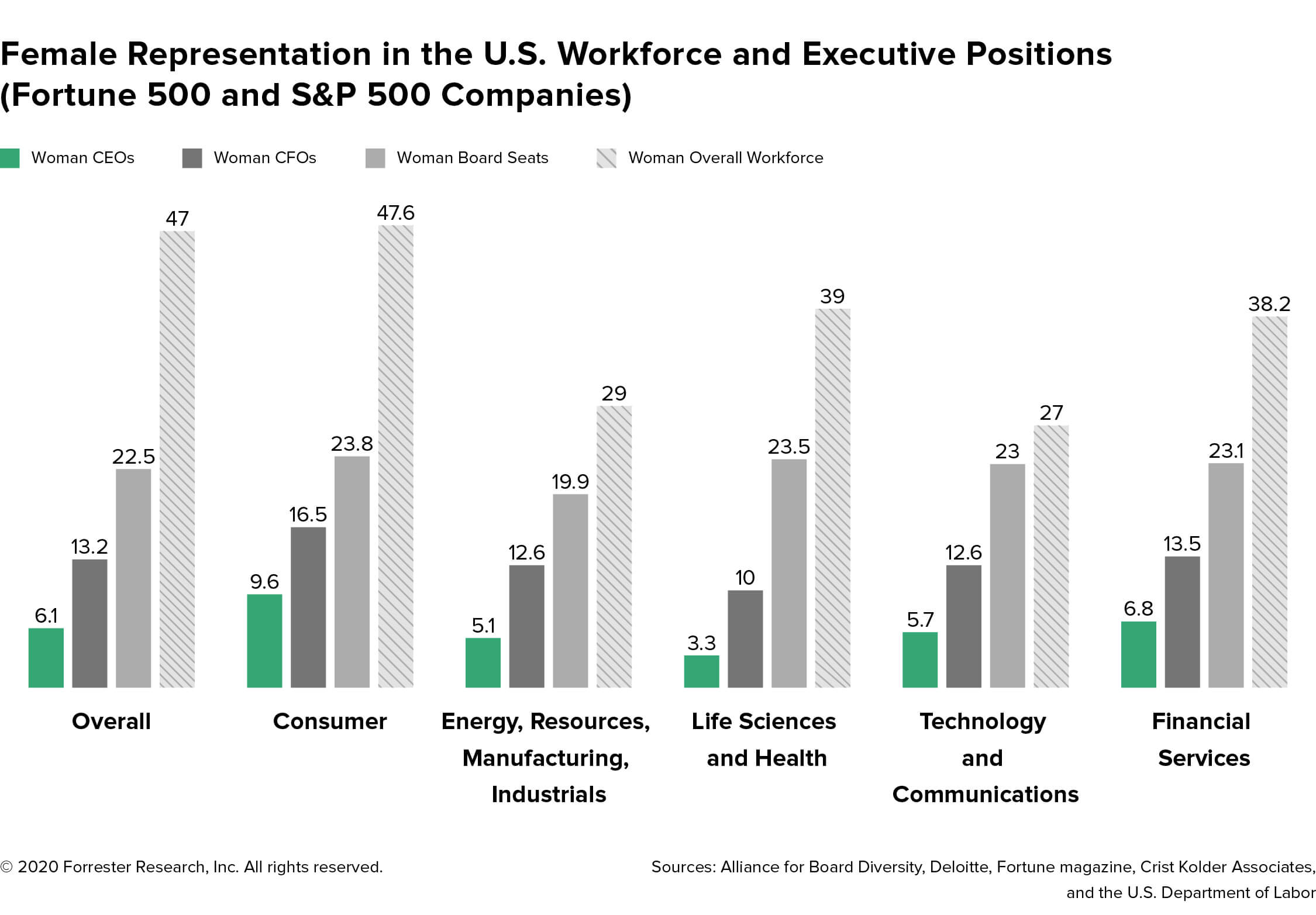How Equally Represented Are American Women in B2B Companies?
- August 18, 2020, marks the 100-year anniversary of the 19th Amendment to the US Constitution, which gave women in all states the right to vote
- Over the last 100 years, the percentage of women in the overall workforce has increased to 47% —consistent with many other western countries
- However, data from numerous sources shows that female representation in executive positions at B2B companies is still shockingly low considering these workforce changes
On August 18, 1920, the U.S. Congress officially ratified the 19th amendment to the Constitution, which granted women in all states the right to vote. It marked the end of a struggle for suffrage that had begun almost immediately after the original Constitution was ratified in 1789. A significant catalyst for the amendment had been the First World War, as this period led to the expansion of women’s role in society and the workforce beyond areas they had occupied in the previous century (e.g., teachers, telephone operators, textile workers, unpaid laborers on family farms) and into the world of the office and heavy industry.

By 1920, women made up about 20% of the workforce. One hundred years on, women now make up about 47% of the U.S. workforce. The anniversary of the 19th amendment is a good time to evaluate how well women are represented in industry, and especially in executive positions of influence at B2B companies. Earlier this year, I conducted a similar analysis of racial diversity among B2B companies, and the motivating question for this analysis is very similar: B2B executives and industry leaders voice support for gender equality, but are organizations acting on this in any meaningful way?
To answer this question, I again looked at heavily weighted B2B sectors in the Fortune 500 and S&P 500. I drew on data compiled from the Alliance for Board Diversity, Deloitte, Fortune, Crist Kolder Associates, and the U.S. Department of Labor. I examined female representation in hiring, C-level appointments, and board makeup. I also compared B2B business categories with consumer businesses. As with the earlier study of minority leader representation, I found that gathering and comparing data sets on gender representation wasn’t straightforward, so we need to be somewhat cautious in interpreting the results. That said, the numbers tell a clear story.
Let’s begin by examining women in the Fortune 500/S&P 500 overall (shown at the left of the chart). As we’ve mentioned, women make up about 47% of the total U.S. workforce, yet only about 6% of Fortune 500/S&P 500 CEOs are women, and only 13% are CFOs. About 23% of board seats are held by women. Overall, women have better board and CFO representation than do racial minorities, but the lower CEO representation shows that women are grossly underrepresented in all categories.
Heavily weighted B2B industries mostly fare worse. In all the B2B industry sectors I tracked, the hiring of women is well below the level for the U.S. workforce overall (by comparison, female representation in consumer sectors is slightly above this overall level). C-level and board-level representation for women hovers at or below the overall industry rate. Life sciences and healthcare is notably worse on C-level representation than other sectors, while the tech sector shows a well-documented struggle to attract a female workforce. Financial services modestly outperforms the Fortune 500/S&P 500 for female executive hiring. But this is all detail: The obvious takeaway from this data is that women remain sorely under-represented in B2B-weighted industries and are consistently absent from executive ranks. Sheryl Sandberg, COO of Facebook, once famously said that “In the future there will be no female leaders, just leaders.” We’re clearly some way from realizing this vision.
At this point, I suspect that many women reading this are shrugging and saying, “Why are you surprised?” More importantly, why haven’t things changed? One answer is sexism, whether overt, subconscious, or institutional. Another answer often discussed by women’s advocates is that women with children often feel like they have to make a choice between family and career, because there aren’t the necessary support systems like adequate paid family leave. Yet another answer is that things actually have changed, if very, very slowly. There have been painfully slow gains in women’s representation everywhere; for example, the number of female CEOs in the Fortune 500 and S&P 500 has tripled over the last decade, from about 14 to 43. Even these paltry gains have been hard won: The tenacity of the suffragettes 100 years ago is mirrored in the determination of women today to break through the glass ceiling and make Equal Pay Day a thing of the past. It just isn’t nearly enough.
There are a myriad reasons why B2B leaders need to take action on gender equality, but two are worth highlighting: it is the right thing to do, and inaction will damage their brand. On the latter, a study by The Woman Corporate Directors Foundation found that among 4,000 board members they surveyed, male directors over 55 cited a lack of qualified female candidates as the main reason for poor female representation, yet women and younger men considered the male-dominated networking culture as the cause.

Equal representation needs to be a tenet of the brand, and a guiding principle for the actions the company takes. Evaluate your corporate messaging using the SiriusDecisions Messaging Nautilus®: Corporate Brand, and make sure that brand values translate into business actions — in hiring and promotion, but also in a wider array of activities that span corporate social responsibility and employee education.
The data shows just how inequal B2B companies are in hiring and promoting women, but also how a generational tide of opinion has already turned. B2B executive leadership need to catch up.
